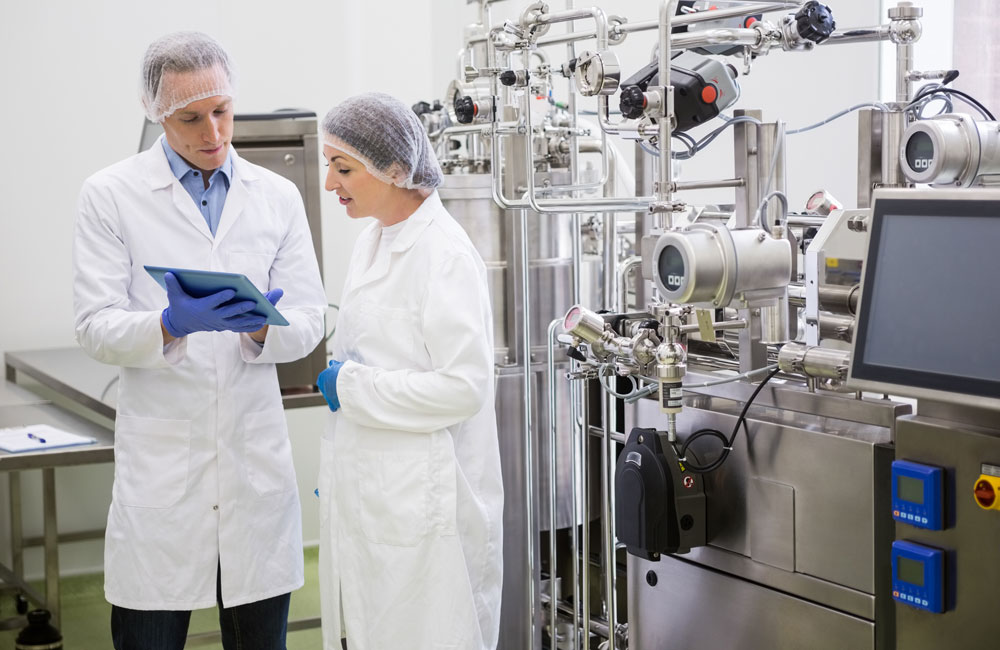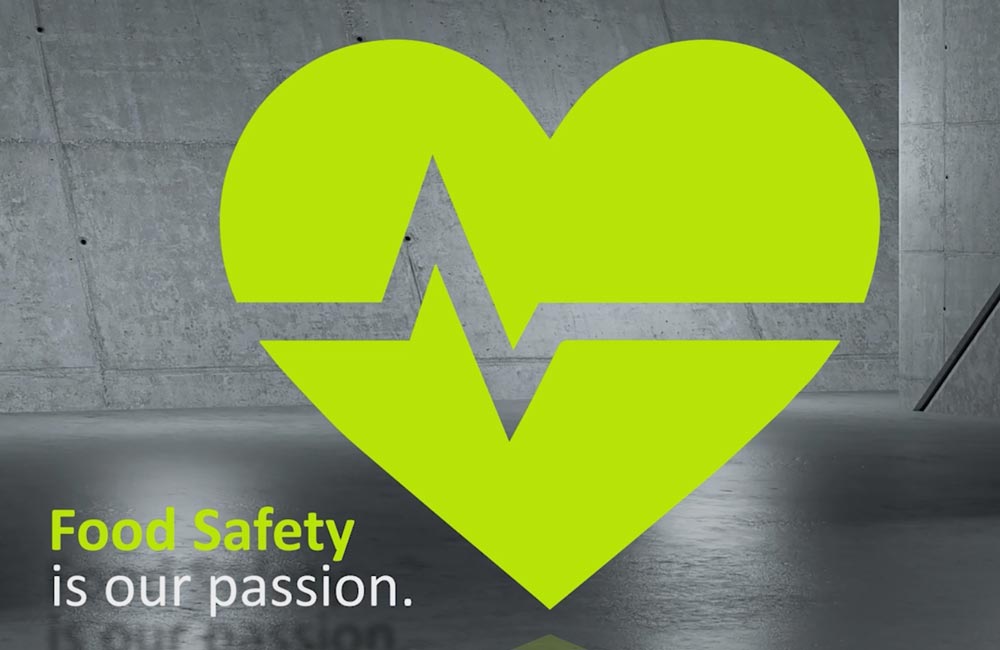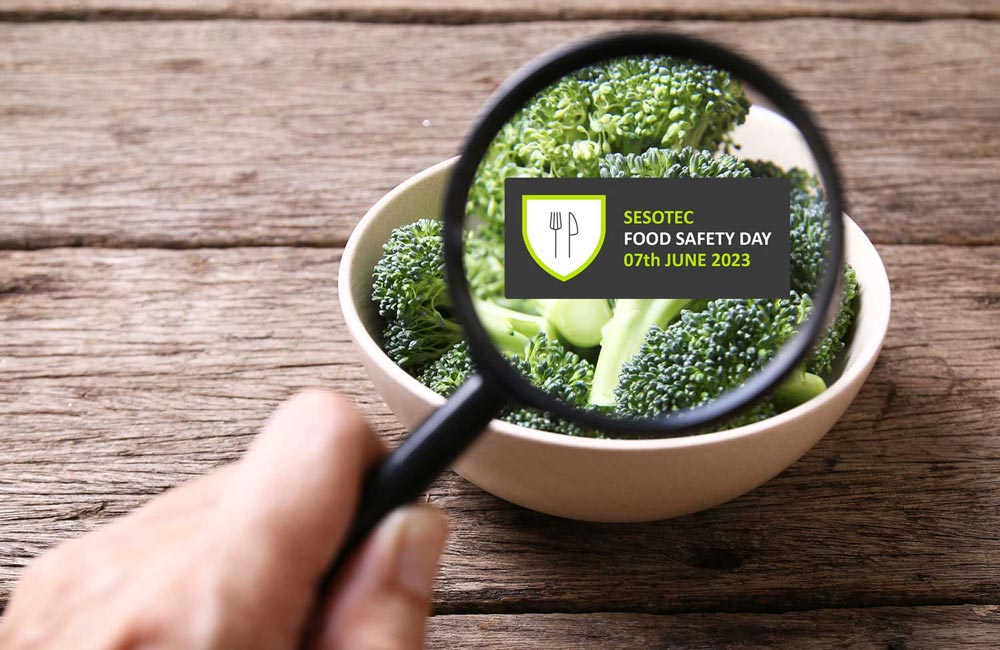Food Safety
May 20, 2020 |
How food safety standards impact production

Ensuring food safety is the overarching concern that connects food industry players from all parts of the food supply chain. Food safety standards are omnipresent in the manufacture and production of food products, and a substantial portion of a food producer’s expenditure is dedicated to their food safety management system.
In manufacturing, food safety management systems are designed to address two types of food safety standards: legal food safety requirements as defined by governmental agencies, and food safety certifications obtained from private, third-party auditing firms.
Legally speaking, food manufacturers are only required to comply with the food safety legislation of the countries in which they do business. By comparison, obtaining additional, internationally recognized food safety certifications from third-party auditing firms is optional.
The challenges of food safety management for manufacturers
Ensuring food safety is an intensive and continuous process. Implementing and maintaining an effective food safety management system invariably demands the investment of nontrivial amounts of time and money.
All international food regulations are built around an HACCP concept: they identify potential food safety hazards and critical control points, and specify proactive means by which to control for and prevent these hazards. The more potential hazards inherent to a food manufacturing process, the more robust the food safety audit and controls must be.

The exact amount of resources a manufacturer should expect to invest in food safety management depends largely on the foodstuffs produced and the scope of production. Food manufacturing facilities that run highly complex operations consisting of hundreds of employees and dozens of distinct processing steps should expect to invest more time and resources into achieving compliance.
Time invested in food safety
Not all working hours in a food manufacturing facility are spent on production. An important number of working hours are devoted to tasks related to food safety. These activities include, among others:
- Employee education – All employees who come into contact with food products over the course of their workday must be trained in food safety protocol. In addition to certifying new hires, employees need to partake in recertification sessions on a regular basis.
- Documentation and recordkeeping – From equipment cleaning protocol to the materials used in food-contact applications, most every aspect of the food production process must be documented.
- Inspections – From raw ingredient intake to in-process inspection to final quality checks, food products are inspected many times on their journey through the supply chain. Distinct quality control measures are carried out at each individual stage.
- Hygiene and cleaning – Facilities and all food-contact equipment therein must be sanitized at regular intervals. All employees working in food-contact roles must also take time to ensure they are following proper hygiene protocols.
- Audits – A requirement for obtaining food safety certification from a third-party agency, audits can span several months and include extensive preparation, consulting, on-site visits, and follow-up communication.
- Validation and verification – It is not enough to simply implement a food safety management system; food manufacturers must also regularly prove that their system works. Validation concerns collecting evidence that the chosen food safety methods are effective for the application, while verification concerns confirming that implemented processes are working as expected.
Money invested in food safety
Ensuring food safety in a manufacturing environment also requires financial investment. Some of the costs involved in a robust food safety management system include:
- Certification – Obtaining and renewing certification with third-party auditors involves several upfront costs. For an initial on-site audit, food manufacturers should expect to spend between $5,000 and $10,000 USD, not including additional travel costs. After receiving certification, there are also yearly membership fees.
- Food Safety Systems Manager salaries – Many larger food production businesses have a dedicated role or team responsible for the management of food safety activities.
- Food safety technology – From advanced contaminant detection equipment, to automatic temperature controls, to hygienically designed processing equipment, a large portion of the total cost of food safety goes towards investing in the proper technology to reliably reduce risk.
- Equipment maintenance and servicing – Food processing and inspection equipment must be regularly serviced in order to prevent malfunctions and unplanned downtime. Should machinery deteriorate, foreign objects may contaminate food products. Computerized food safety technology, such as contaminant detection equipment, must also undergo software updates.
Food safety as an economic imperative
Despite the hefty upfront and ongoing costs of achieving and maintaining compliance, food safety remains crucial to the economic viability of a food manufacturing business.
Because food law (and the rigor with which it is enforced) can vary from region to region, global market leaders within the food industry demand that all upstream and downstream partners with whom they work provide evidence as to the effectiveness of their food safety system.
In addition to granting access to lucrative international markets, a robust food safety management system can provide highly precise data that can be leveraged to improve productivity and prevent recalls.
Preventing recalls
Though ensuring food safety is a time- and resource-intensive endeavor, the effort and costs involved are negligible compared to fallout of product recalls.
Globalization and digitalization have amplified the corporate consequences of contaminated food products entering the market. Not only is executing a recall more costly and difficult when goods have been shipped across the globe, but the news of recalls can now spread faster and further via social media and other digital channels.
Product recalls are truly disastrous for food industry businesses. In addition to the hefty price tag of organizing and executing a recall, companies may also incur untold losses due to the resulting decline in consumer trust. Both can be devastating to the ongoing economic viability of a company.
A third-party food safety audit can help illuminate the blind spots in a production line. These blind spots, if neglected, could lead to a contaminated product making its way onto consumers’ plates. Through continued investment in advanced food safety technology and more robust and transparent food safety management policies, food manufacturers can continuously shrink the likelihood of a recall.
Efficiency gains
Improving
a facility’s food safety management system can do more for a manufacturer than
simply win them the certification necessary to access international markets. By
implementing a modern and robust food safety concept, manufacturers can also
reap rewards in terms of production efficiency.

For many food manufacturers, obtaining an internationally-recognized certification in food safety involves implementing a meticulous protocol for ongoing documentation and updating the food safety technology within their facilities. Where intelligent inspection equipment meets rigorous documentation, there is valuable data to be gleaned.
By improving and expanding contaminant detection equipment and record-keeping practices, food manufacturers can win cost-saving insights into their production processes, reduce excessive food waste, and quickly trace food safety threats right to the source.
An effective food safety management system can also help manufacturers to rapidly ramp up production in times of crisis. Should production output need to quickly multiply in order to deliver basic foodstuffs to a public in need, a robust and reliable food safety management system can be scaled up to accommodate a higher output without compromising on quality.
Conclusions: What is the purpose of a food safety management system?
Because food safety is a series of preventative procedures, it can sometimes be challenging to ascertain what a food industry business can gain financially from their implementation. How does one assign an exact dollar value to food safety failures that may have happened, but didn’t?
The purpose of a food safety management system is to ensure that a food production facility is using state-of-the-art technology, science, and protocol to minimize the risk of contaminated products reaching consumers. From preventing to recalls, to navigating the global supply chain, to increasing productivity: when food manufacturers modernize their production facilities according to international standards, they become better prepared to handle the economic challenges of the modern food industry.




